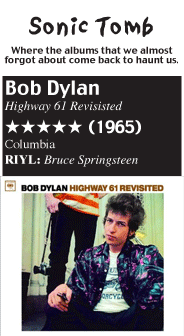By Jesse Cataldo
In his recently published autobiography Chronicles, Vol.1, counterculture icon Bob Dylan laments his weighty role as the so-called “voice of a generation.” He never wanted to be the voice of anything, he asserts, the political slant of his music simply conflated with the turbulent social climate of the late 1960s. This claim is believable, generally because we can see from his long history in music that Dylan did what he wanted to, following his own fancies rather than attempting to act as chief minstrel of the baby boomers. This was most evident in 1965, when Dylan bravely risked his own ruin by dropping much of his political context and going electric, a change which appears mild but was viewed as outrageous by his folk fan base, who booed him off the stage at the Newport Folk Festival that same year.
Judging by the initially negative response to this change, it would have been almost inconceivable for Dylan to expect the enduring success that it would bring him. The songs on Highway 61 Revisited-Dylan’s first totally electric album-average over five minutes in length, roughly double that of the two minute and thirty second pop ditties which were the AM mainstay of the early to mid sixties. Yet somehow “Like A Rolling Stone,” at a formerly impossible length of six minutes and thirteen seconds, became a radio hit, making Dylan a cultural hero and beginning a shift in the conventions of popular music.
The formerly mentioned epic, an almost bouncy jaunt through the hazards of life and the lows of newfound poverty, contains lyrics which manage to be both less and more pointed than earlier Dylan songs. While the lyrical aim is broad, you can almost feel a sardonic eye pointed toward Dylan’s own generation, spurning the bourgeois tendencies of their parents and falling flat on their faces in a rush to gain independence. On “Tombstone Blues” Dylan shakes off the last vestiges of his folk propriety, incorporating both slide guitar and a racing tempo. Dylan transposes the lengthy wordiness of folk onto the slight frame of the pop song. Almost all of the tracks contain a verse-bridge-chorus structure, yet the verses are so heavy and thick with character that they dwarf the other two parts. This leaves the choruses a smaller but still vital purpose, serving as the synopsical lines which reinforce the songs theme.

